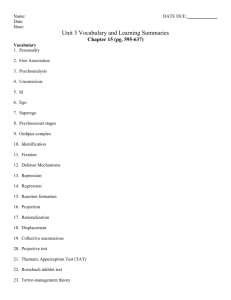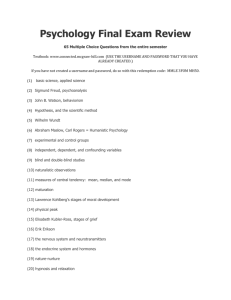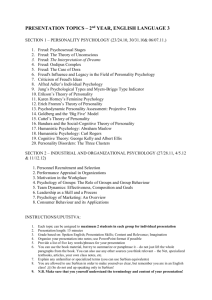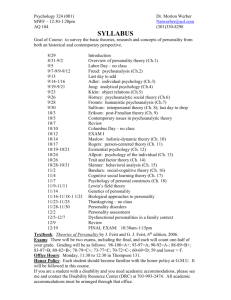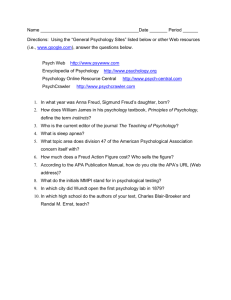What is Psychology
advertisement
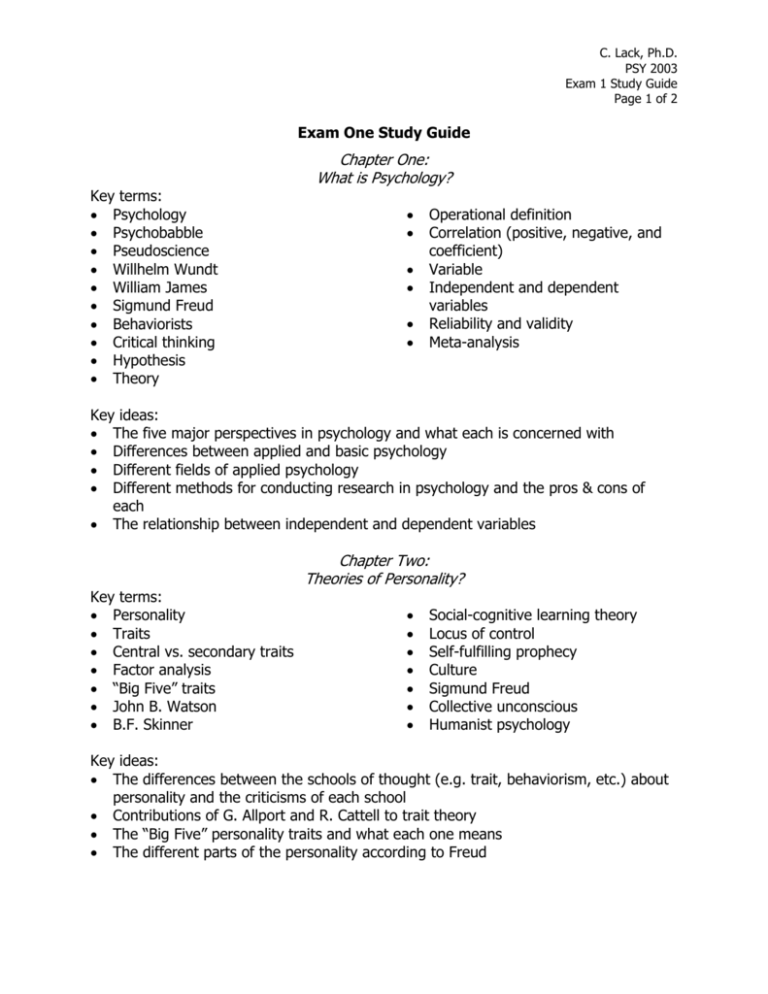
C. Lack, Ph.D. PSY 2003 Exam 1 Study Guide Page 1 of 2 Exam One Study Guide Key terms: Psychology Psychobabble Pseudoscience Willhelm Wundt William James Sigmund Freud Behaviorists Critical thinking Hypothesis Theory Chapter One: What is Psychology? Operational definition Correlation (positive, negative, and coefficient) Variable Independent and dependent variables Reliability and validity Meta-analysis Key ideas: The five major perspectives in psychology and what each is concerned with Differences between applied and basic psychology Different fields of applied psychology Different methods for conducting research in psychology and the pros & cons of each The relationship between independent and dependent variables Key terms: Personality Traits Central vs. secondary traits Factor analysis “Big Five” traits John B. Watson B.F. Skinner Chapter Two: Theories of Personality? Social-cognitive learning theory Locus of control Self-fulfilling prophecy Culture Sigmund Freud Collective unconscious Humanist psychology Key ideas: The differences between the schools of thought (e.g. trait, behaviorism, etc.) about personality and the criticisms of each school Contributions of G. Allport and R. Cattell to trait theory The “Big Five” personality traits and what each one means The different parts of the personality according to Freud C. Lack, Ph.D. PSY 2003 Exam 1 Study Guide Page 2 of 2 Chapter Four: Neurons, Hormones, and the Brain Key terms: CNS, PNS Spinal cord Spinal reflex (and examples) Neurons Glial cell Dendrite Cell body Axon Plasticity Neurontransmitters Endorphins Hormones Adrenal hormones Brain stem Medulla Pons Cerebellum Thalamus Hypothalamus Hippocampus Reticular activating system Corpus callosum Key ideas: The divisions of the nervous system and the role of each division in the body What happens when each division of the nervous system is activated The parts of a neuron and function of each Types of neurotransmitters and their functions Major structures of the brain and their functions The lobes of the brain and their primary functions Primary functions of the right vs. left hemispheres



